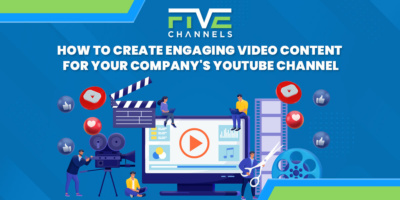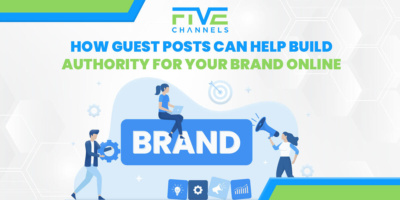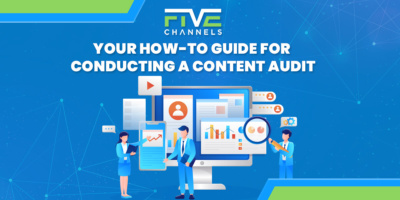Did you know that the total open rate for emails in North America is around 30 percent? Email marketing is far from dead, despite many people’s predictions to the contrary.
Of course, an average is only that, an average. That means there are campaigns that perform much better. There are also email campaigns that perform much worse than the average.
You might suspect that some of the worse-performing campaigns are cold emails. Much like its cousin cold calling, cold emailing can be a tough sell.
If you’re looking for a cold email example that works, take a look at these eleven examples. They’ve been tried and tested for performance. Pick one of them, or use all of them, and watch your sales team soar to success.

1. Find the Decision-Makers
One reason you might be sending a cold email to potential client is that you need to find the decision-makers. You may have identified the company as a lead for a few reasons. Maybe someone is reading your blog, or maybe you’ve connected with them on social media.
Whatever the case, you want to make sure you’re connecting with the right people. This cold email example will help you identify who you need to talk to.
Start by customizing the email greeting for each individual. Then identify who you’re looking for. You can write something like, “I’m writing in hopes of finding the person who handles [responsibility or department].”
Then identify any other organizations members you’ve emailed. Next, spend a bit of time describing your company and what you do. Remember to keep it short.
Finally, ask for an appointment with this person if they do happen to be the right contact. You can write something like:
– What does your calendar look like?
– Would you have time to chat about this shortly?
– When would you be available for a 10-minute conversation?
Include a line asking for further direction if they aren’t the appropriate contact. Then remember to sign off. Don’t forget a great subject line, and you’ll be well on your way to getting appointments.
2. Use Data the Right Way in a Cold Email
Many salespeople make ample use of all kinds of data. You might be monitoring a potential lead’s visits to your website and what blog posts they’re reading.
Including that kind of information when you send a B2B cold email can feel a bit creepy though. You want to make sure you’re using your data the right way.
A timely email can help win a client over. You don’t want to say things like, “I know you’re working on a new project” or “I see you’ve been looking into our products.” That’s unlikely to make a new prospect feel comfortable.
Instead, try tying your information back to broader trends. You can try asking about common industry pain points. Try one of these lines:
– We’ve noticed companies like yours tend to struggle with [problem].
– We work with many companies in [industry] and many see [problem].
Once you’ve introduced the problem, outline a few ways your company can help or has helped others. Then make a pitch for a demo or follow-up conversation before signing off.
Remember to be clear and concise. Keep the focus on this company and how you can help them solve the problem they’re facing.
3. Build Rapport with a New Contact
Outreach is important, especially if someone has been promoted. Whether it’s you taking over someone else’s accounts, or a potential client that has just moved up the ladder, it’s a great time to reach out.
Send a short email to this prospect, acknowledging that you’ve worked with their predecessor. If you’ve moved up, introduce yourself as taking over from the last sales representative.
Try to introduce some levity into this email, but don’t forget to be professional. You can ask about how they’re settling into their role. Then ask if they have time to chat about your product or service.
They may not bite immediately, but you’re well on your way to establishing a relationship with them.
4. Establish Your Value with This Email Template
The most important thing to remember about cold emailing is that it isn’t about you, it’s about the client. To that end, you want to establish your value to this prospective client.
Why should they team up with you? What can your company help them with? This cold email sales template helps you provide the answers.
If the lead has interacted with your website, such as signing up for a newsletter, mention of this. Then ask them to help you understand their goals.
Next, outline the kinds of solutions your business offers. What kinds of problems do your products address? How have your services helped some of your other clients?
If this lead is struggling with any of those issues, they’ll likely be interested in hearing more. They’ll want to know about your solution and how you achieve the results you do.
5. Ask for a Meeting with This Email
One of the most classic cold email campaigns is to ask potential customers for a meeting. You may think that busy B2B clients don’t appreciate being asked if they can spare time to talk. You might be surprised.
You can improve your response rate by using this tried-and-true email template.
Use an attention-grabbing subject line like “quick call tomorrow?” or mention a benefit of your solution. Introduce yourself and your solution. Then suggest you think that there could be an opportunity for them here.
Once you’ve introduced that idea, ask for a quick meeting by inquiring about availability. You can also directly ask to schedule a meeting.
6. Introduce Yourself with This Cold Email Example
Sometimes, your cold email is really cold. The lead may have visited your website in the past, but they may not have done much more than that. You may have received their contact information from another colleague or source.
In these cases, writing an email to introduce yourself is a good idea. Start by identifying who you are, what company you work for, and what your role is. Try to focus on how you help companies like the client’s.
Next, you can say you were inspired to learn more about what this company does. Point out areas of opportunity that you noticed, and then ask if there’s time to follow up on them.
7. A Picture Says a Thousand Words
Sometimes, the best way to grab someone’s attention is with a picture. Emails that are humorous tend to get a better response. Remember to keep it professional though.
A good example might be sending a picture of an office dog, if you have one. Acknowledge that you’re trying to “break the ice” by being a little bit offbeat.
You can also make your copy a little bit more informal if that fits with your brand. Ask how the client would rate their current solution provider or ask about a common pain point. Then outline your solution.
An example might be asking how a company would rate their current IT partner on a scale of 1 to 10. Then write, “If you said anything less than 10, it might be time to look for a new partner.”
You can then ask for a meeting or explain the benefits of your business. Tell this client how you’ve solved similar problems for other companies.
8. Explain the Benefits of Your Business
Some of the best B2B email templates are simple enough. They use bulleted lists to explain the major benefits of your product or solution.
In these cold emails, you can assume the prospect isn’t familiar with your business. Start off by introducing the company. Then launch into some of your biggest benefits for clients.
Try to distill the benefits down to two or three points. Why do most of your clients turn to you? What results do you help them achieve?
This short list should drive home the biggest reasons any business should be working with you. It’s also short and incredibly easy to read.
That makes people much more likely to pop into your calendar to schedule a meeting or to pick up the phone.
9. Follow up Email Templates
Did you know that the majority of salespeople give up after sending just one email? Many people are afraid they’ll annoy a prospect if they send a follow up email. Worse, they worry that they might be wasting their time.
Research shows it’s almost always in your favor to follow up. Don’t just follow up once either. Following up with a prospect up to six times will yield positive results.
Part of the issue is knowing how to craft follow-up templates that intrigue people. If someone opened your email, then went to your website, following up is a great idea.
Give people a few days between your initial email and your follow up. You can then write, “I trust you’ve had some time to consider my initial proposal.”
Ask if they have questions or need more information. You can also pitch a meeting or product demonstration.
You can even follow up with a lead that’s gone stale. If they haven’t responded, simply reach out again. Ask if they’re still struggling with the same point.
Point out opportunities you saw based on the conversation you had previously. Then offer to pick up the discussion where you left off.
10. Stick to One Call to Action
In any B2B email, you want to give the prospect clear direction for what to do next. Should they pick up the phone and call you? Do they need to schedule a meeting with you by clicking a link or hitting reply?
One thing the most successful cold email templates have in common is that they stick to just one call to action. By providing just one CTA, you make it easy for the client to see what their next steps are.
One of the easiest ways to do this is to provide a button or a link. Tell clients to “click here to schedule” or ask them to hit “reply” if they want to chat.
In your follow-up emails, you can include a quick survey to make things easy. Prospects can click the most appropriate answer. You can include “interested and want to schedule” or “not interested at all” as two of the options.
Some companies like to include more options. You could consider:
– I need some more time to think about this, so please follow up with me later
– I need more information, so please send me some relevant articles
Anything similar will suffice. Some companies even like to include a “humorous” option. The point is to make it easy for the client to tell you what your next steps are.
Including the poll or a big “click here” button, you make it clear what the prospect should do next. If you’re including three or four CTAs, not only are your emails too long, they’re likely confusing too. Try paring things back and see how your response rates improve.
11. It’s All About the Client
Perhaps the most important thing about any cold email example is that it needs to focus on the client. Too many sales emails focus on your company and what you do.
Most successful examples focus on the client. Ask them about their pain points. Share data and show why your solution will help the client.
You should also be sure to personalize. Keep in mind that beautifully designed templates may look less personalized than a plain email.
By putting the focus on the customer, you’ll have a much better chance of success. Whether you’re hoping to score a meeting or close the deal, making your cold email revolve around the customer will serve you well.
Better Emails Mean More Wins
Any cold email example on this list will help you improve your own cold emailing efforts. Better emails mean more wins for your sales team and your business.
Looking for more tips to create more sales and marketing wins for your business? You’re in the right place. Learn how to construct an effective email drip campaign and much more with our informative articles.
Owner and Chief Marketing Officer, Jason Hall, and his team specialize in creating brand awareness / traffic and lead generation / marketing funnel and conversion optimization, while utilizing the appropriate marketing channels available within your industry. With diverse clients throughout the world, Jason's team is well connected within many industries to assist with your marketing strategies. With no long term contracts and various levels of service, Jason's team will increase the quality of your online traffic, leads, and sales.
About the author...
Located in the heart of the Emerald Coast - Destin, FL, founder and Chief Marketing Officer, Jason Hall, and his team specialize in creating brand awareness / traffic and lead generation / marketing funnel and conversion optimization / and PR campaigns, while utilizing the appropriate marketing channels available within your industry.
With diverse clients throughout the world, Jason's team is well connected within many industries to assist with your marketing strategies. With no long term contracts and various levels of service, Jason's team will increase the quality of your online traffic, leads, and sales.









